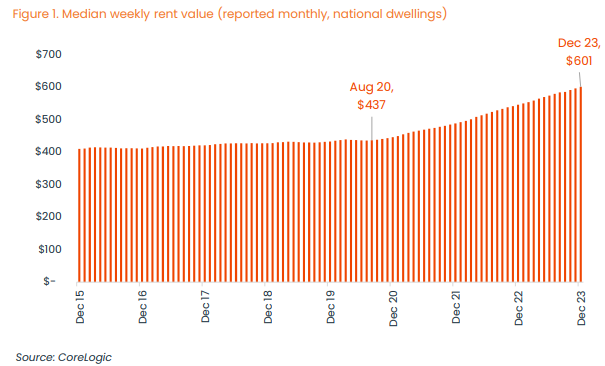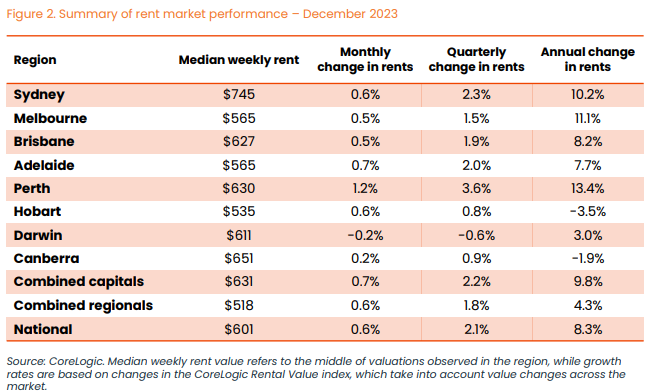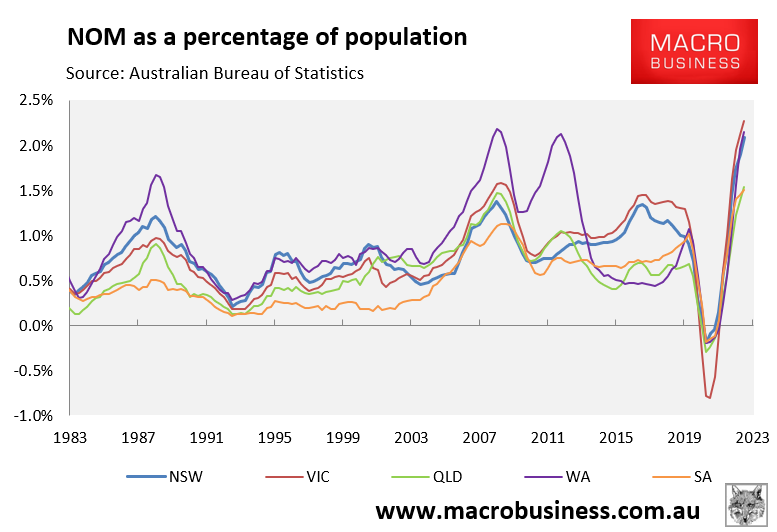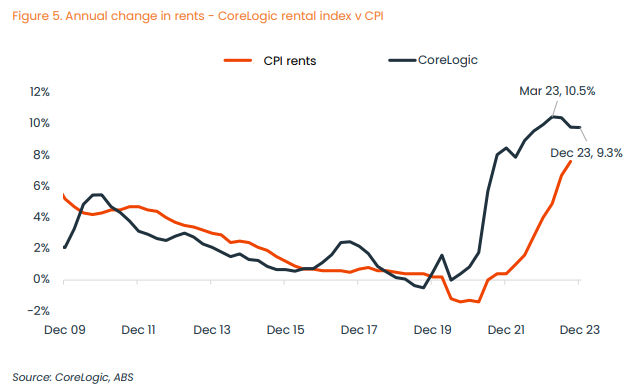CoreLogic has released data showing that Australia’s median dwelling rent hit an all-time high of $601 in December 2023, equating to a median annual rent of $31,252 a year:

According to CoreLogic, the nation’s median has soared from $437 per week in August 2020, pushing annual rent values up by more than $8,000 over that time.
This follows an average annual rental growth of 9.1% a year over each of the past three calendar years.
In turn, rental affordability has deteriorated markedly, with the share of gross median household income required to service median rent rising from 26.7% of income in March 2020 to 31.0% as of September 2023.
As illustrated in the below table, Sydney (10.2%), Melbourne (11.1%) and Perth (13.4%) experienced the strongest rental growth in 2023:

This reflects their higher share of net overseas migration, which has driven rental demand:

Indeed, with the pandemic flow of Australians to the regions over and net overseas migration surging to record highs, Australia’s capital cities are now driving the nation’s rental growth:

While national rental growth has eased slightly, given the long lag between asking rents and overall rents as measured in the Consumer Price Index (CPI), rents will continue to place upward pressure on Australia’s inflation through 2024:

As explained by CoreLogic:
“CoreLogic rent measures are derived from advertised rents, where CPI measures rents actually paid by households. Rents paid tend to be ‘sticker’ than values, due to periodic leases (usually 12 months)”…
“Historically the lag between CoreLogic and CPI rent measures has averaged six quarters”…
Given that rents comprise around 6% of Australia’s CPI basket, the rental market will remain a thorn in the side of the Reserve Bank of Australia (RBA) as it seeks to tame inflation.
That said, the RBA is still likely to cut rates late this year amid the deepening per capita recession, weak household consumption, rising unemployment, and overall softening inflation.

